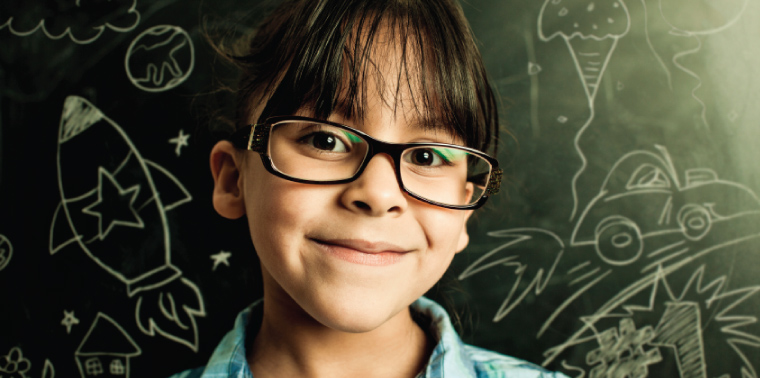July 30, 2013 — I recently attended a wedding of two friends at the Norwegian Seamen’s church in San Francisco. During the ceremony, the priest paused to reflect on the improbability of the circumstances that brought us together: What were the odds, he asked, of a Norwegian woman falling in love with a Scotsman and traveling to the other side of the world to marry, bringing together friends and family from three nations? Improbable, and yet there we were.
But perhaps even more unlikely were our surroundings: a church decorated with silver vessels and iron candelabra mined and manufactured thousands of miles away; gowns and suits made of synthetics and natural fibers sewn in Southeast Asia and Eastern Europe; drinks from Vietnam and South Africa; smartphones snapping pictures of the ceremony and immediately sharing the images with family and friends across the globe. The accessibility of all things from all places — that was what was most improbable.
Humanity is growing increasingly connected, with each local choice having a distinct footprint that reverberates across the planet. We recognize this trend, and we live it — but are we preparing the next generation for the world toward which it’s leading us?
My newly married friends may someday have children, and those children will grow up in a continually changing, increasingly globalized world drastically different from the world in which any of us were raised. What are the new challenges they will need to overcome to care for this planet? What are the questions they will need to ask and answer? And how can we prepare them to do so? I would like to propose 10 things students of today and tomorrow should learn to be equipped to take care of the world they will live in as adults.
1. How do we feed a global community?
By 2030, the U.S. Census Bureau predicts the world population will pass 8 billion. That is roughly 1 billion more people to feed than today, many of whom will have grander expectations of the global food market than access to basic nutrition. Meanwhile, the introduction of Today’s children — tomorrow’s adults — need to learn how food is really grown, managed and transported across the world.genetically modified foods into more markets and the spread of industrial agriculture are changing the nature of food production itself. Today’s children — tomorrow’s adults — need to learn how food is really grown, managed and transported across the world. They need to learn what the impacts of those methods are. And they need to know why the system has evolved in this way so they can understand what feeding 8 billion people will need to look like, the impacts of our food choices and the potential trade-offs with the environment that will need to be addressed.
2. How do we power a global community?
Very little information about energy is taught in the classroom today, and too often lessons are coupled with an economic or political perspective, pitting human demand against environmental impacts. The 8 billion people of the future will all have energy needs, whether it’s simply fuel for kitchen stoves or the expectation of regular international (or even intergalactic) travel. Students need to understand where energy comes from, the different forms it takes, how it’s used, and the benefits, impacts and risks associated with different energy choices.
3. How do we safely hydrate a global community?
Just as they need to know the sources of both energy and food, children need to learn about where their water comes from and about important sources of water for the global community. Moreover, it’s essential they learn how water is transported and sanitized for consumption, how it is used in agriculture and energy, and its status as a depleted and unreliable resource in some regions. A basic understanding of water infrastructure will provide valuable context for addressing potential conflicts about water use and rights in the future.
4. How do we communicate with a diverse global community?
As technology has allowed us to widen our community beyond city, state and even national borders, children need to learn about global cultures, religions and languages — not as a group Children need to learn about global cultures, religions and languages — not as a group of outsiders, but as part of a larger community.of outsiders, but as part of a larger community with which we share air, water, food, minerals, energy and other global resources. It’s critical they meet the challenge of cultural exchange and communication, creating a foundation for respectful collaboration in a truly integrated world.
5. What other organisms do we count as part of our community?
Children need to broaden their vision of community beyond the human population to include other organisms and ecosystems. Cross-species empathy can drive thoughtful decision making as children become more responsible for other living things. As caretakers of life, they can become engaged in protecting not just their own needs, but those of every living thing on our planet.
6. How do local choices impact the rest of the world?
Respect and appreciation for others (human and nonhuman) can help children make connections between local actions and global impacts. The direct study of the life sciences is key to understanding and valuing the connectivity of their community to global ecosystems, linking local behavior with its more remote repercussions. Children need to recognize that even a perceived positive behavior change such as the locavore movement can have impacts on communities elsewhere by shifting production, management and economic influences to different regions.
7. How can science be a tool for informing political, social and economic decisions?
Well-meaning teachers sometimes attempt to engage students in science by asking them to debate scientific concepts against political or social ideas — pitting environmental concerns against economic ones, for example. This juxtaposition has the potential to confuse students as they begin to see science not as a source of information, but as a rhetorical tool to outwit peers. They need to understand that quality, well-reviewed and hypothesis-based science has the opportunity to create a strong foundation for answering larger social challenges.
8. How can problem solving and solution-focused learning be used to overcome challenges?
Problem-solving is inherent to science, yet many educators overlook it in favor of either encouraging critical thinking through debate or sticking to rote facts. Meanwhile, manyScience, engineering and math can provide powerful tools for problem solving and thus boost self-reliance, confidence and competence in tomorrow’s adults. students are deterred from science, seeing it as being too limited or too complex. Science, engineering and math can provide powerful tools for problem solving and thus boost self-reliance, confidence and competence in tomorrow’s adults.
9. How can we use connectivity with the global community to enhance our understanding?
Greater and faster connectivity through transportation, media and the Internet has already greatly accelerated the dispersal of information and skills as ideas are more easily shared over longer distances and shorter time periods. There are two key challenges to this connectivity, however. The first is ensuring that all communities have equal access to this global market of ideas. The second is ensuring that children are taught to discern quality information generated from trusted sources. Both increasing connectivity to all community members and encouraging thoughtful interpretation of material will strengthen children’s understanding of the world.
10. How can we use diplomacy to enact change?
If children today learn about the realities of providing for 8 billion people on Earth, who those people are, the ecosystems they impact, and how science can provide solutions to political, economic and environmental challenges, they can then use the greater connectivity of a global community to advance their understanding of — and enact — diplomatic decision making. By thoughtfully managing and cultivating international relationships, they will be able to facilitate just resolutions to the challenges that lie ahead while respecting all community members’ needs.
If today’s children are to know how to manage these global challenges when they are adults, it is our duty to start teaching them now.
At first it may seem an insurmountable burden to teach children all of the skills and information they need in order to take on these questions. But think of the world we live in today. Consider the unlikeliness of our emergence as a global community. Consider our connectedness. And consider our inherent ingenuity for problem solving. Then think about the value of teaching our children about all of this for a better tomorrow. Is there anything more important — and ultimately, more powerful — than addressing these realities, so they will be equipped to navigate the challenges of tomorrow?
The wedding I attended involved people from many nations — those attending, those providing the goods and those sharing the experience from afar. It impacted ecosystems around the planet as the guests traveled to attend and were fed and dressed by our global community. As the world becomes even more connected, we have to ask: What will the leaders of the next generation look like? What will their lives include, and who will they impact? If today’s children are to know how to manage these global challenges when they are adults, it is our duty to start teaching them now.
![]()
Ensia shares solutions-focused stories free of charge through our online magazine and partner media. That means audiences around the world have ready access to stories that can — and do — help them shape a better future. If you value our work, please show your support today.
Yes, I'll support Ensia!

As for Jesse's comment: I'm not sure if you are explaining "probability" correctly. Just because something happens, doesn't mean it is 100% likely to happen (or "a probability of 1" as you have written). I digress. Someone always wins the lottery.
That is a terrific question. I haven’t found a single source that addresses all of these issues to my satisfaction. For the basic science, I am a fan of using the primary literature (searchable through Google Scholar), and even reviews from the United Nations organizations such as the IPCC and FAO. If other readers have recommendations, I would love to hear them. Keep in mind that these 10 questions were not listed because they have easy answers. Though many are based in the science, they have ethical and moral components that make them challenging (even overwhelming or frightening) to face. I would love to see a class that starts to pick students’ brains about these questions, asking them to do the primary research and from there use the science to answer these challenges, while considering the importance of the moral and ethical components. Maybe the best way to start learning isn’t necessarily through a book or paper, but just a conversation around the dinner table: What do you want to know? How could you find it out? How could you use this information? If other folks have ideas, please chime in!